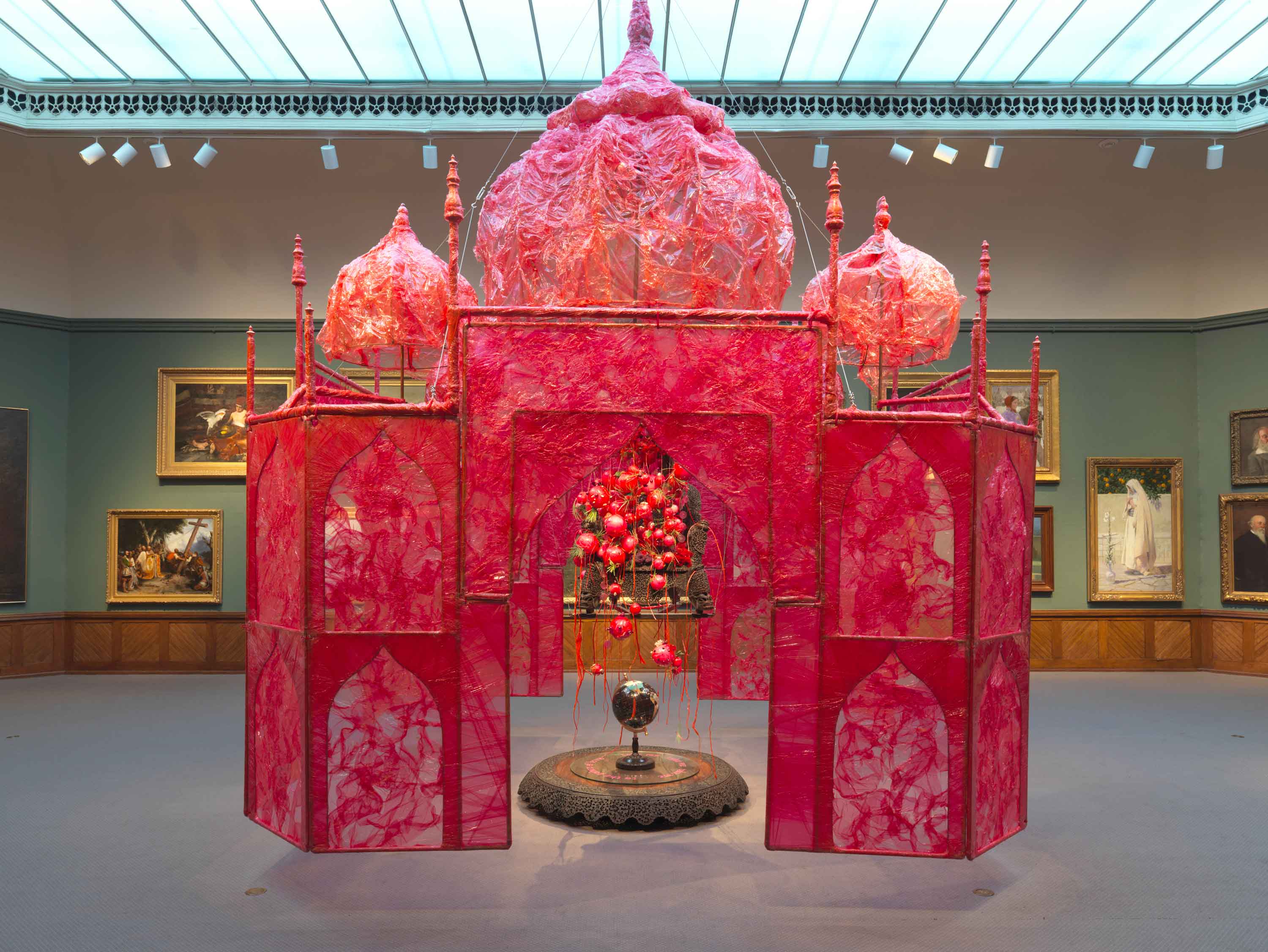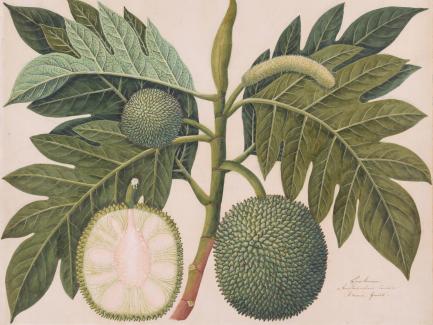Drawing on the iconic form of the Taj Mahal in India, Rina Banerjee’s translucent sculpture subverts typical assumptions about the monument: its costly materials and elegant marble façades, its sense of history and permanence, and its fixed location. In contrast, Banerjee’s palace consists of a frame of steel and copper wrapped in a skin of pink cellophane—a mass-produced material designed for the disposable consumer culture of the twenty-first century. The tentlike structure is suspended from the ceiling and floats above the ground. In the center of the cavernous space are relics of colonialism including an antique Anglo-Indian Bombay chair juxtaposed with a chandelier assembled from a variety of expendable goods—pink foam balls, plastic beads, synthetic materials, and fake birds. The piece encapsulates Banerjee’s working method, combining found objects with consumer products picked up from markets around her home in New York City.
Banerjee (b. 1963) received her master’s in fine art (painting) from the Yale School of Art in 1995. This will be the first display of Take me, take me, take me . . .to the Palace of love at the YCBA since the museum acquired it in 2023.

